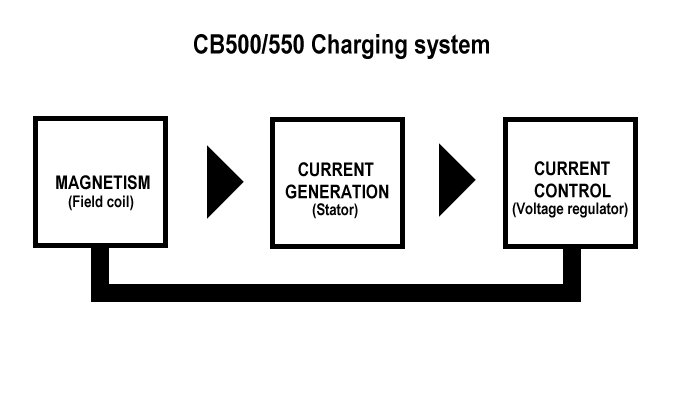  ® ®
|
CB500/550 Charging Part 2 |

|
|
Take a coil of copper wire and pass a strong magnet back and forth over it. A meter attached to the coil will register the presence of electricity, that is, current movement in the wire. This is the beginning of a motorcycle's charging system, and the real thing gets very little more complicated than this, believe it or not, with most of that complexity being found in the system's compatibility (rectifier) and control (regulator) components, not in the major pieces. At least in 70s Honda systems.
The vintage sohc four Honda charging system is relatively unique among today's powersports systems in that the magnet is an electromagnet. The electromagnet's strength starts out at maximum and then the regulator turns it down at high engine rpm to protect the battery. The charging system is fairly high output, at least by the standards of the era.
Briefly, this is how it all works. Turning on the keyswitch electrifies the magnet. When the crankshaft rotates this magnetism induces current in the stator. Being magnet generated the stator's electricity rhythmically alternates polarity so the rectifier is there to "rectify" that, and the battery builds charge at the positive battery terminal. Since output increases with engine rpm, the regulator limits maximum charge to prevent overcharging. A simple system that works very simply.
The system is robust and durable. Practically the only thing that gums up the works is the inevitable corrosion and general deterioration of the dozens of wire connectors due to their being the old-school exposed-back (canon plug) type. This is the area that should get most of your attention. And in fact, replacing the bike's wiring harness has emerged as the best way to maximize the potential of these charging systems.
|
| Part 3 |
Email me
www.motorcycleproject.com
My bio
© 1996-2025 Mike Nixon